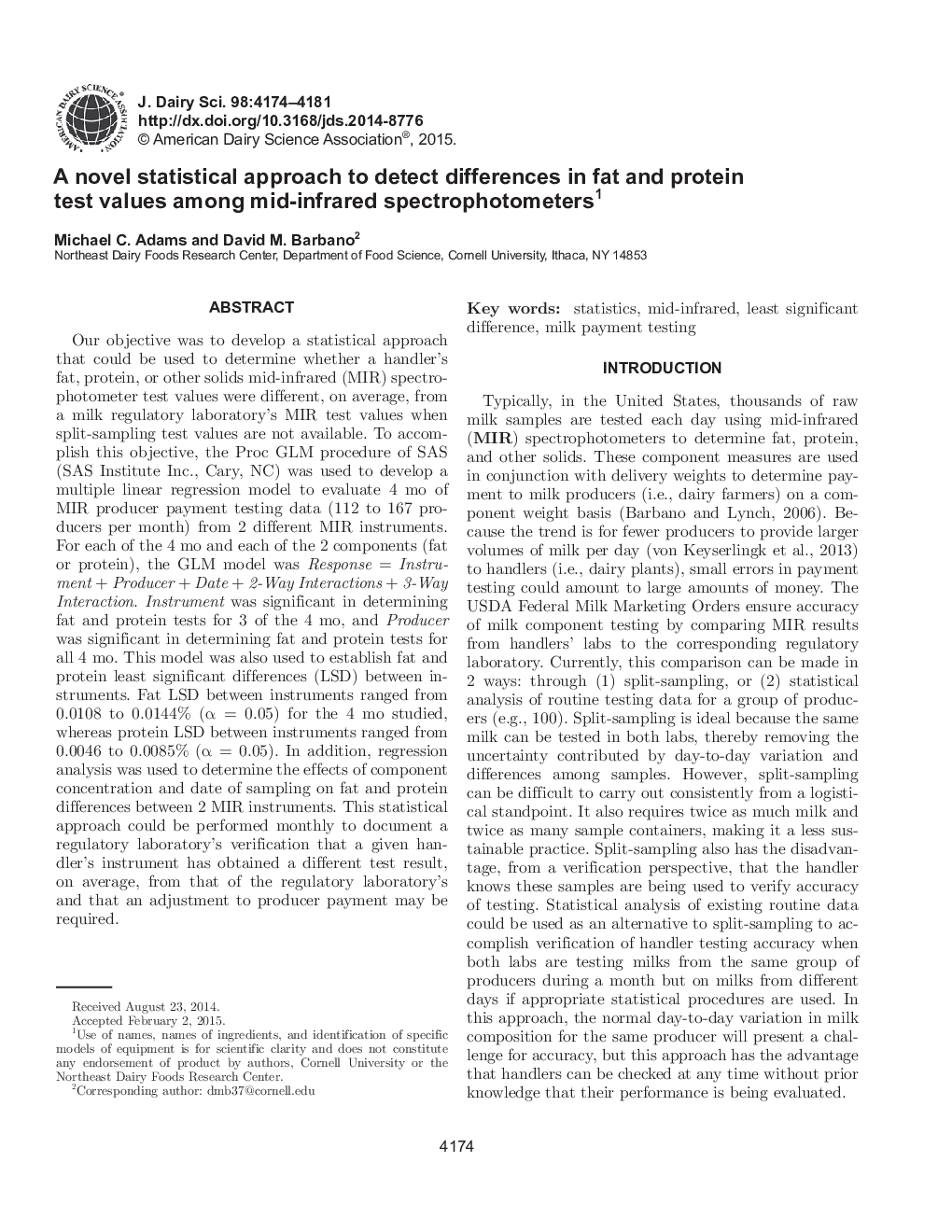| Article ID | Journal | Published Year | Pages | File Type |
|---|---|---|---|---|
| 10975861 | Journal of Dairy Science | 2015 | 9 Pages |
Abstract
Our objective was to develop a statistical approach that could be used to determine whether a handler's fat, protein, or other solids mid-infrared (MIR) spectrophotometer test values were different, on average, from a milk regulatory laboratory's MIR test values when split-sampling test values are not available. To accomplish this objective, the Proc GLM procedure of SAS (SAS Institute Inc., Cary, NC) was used to develop a multiple linear regression model to evaluate 4 mo of MIR producer payment testing data (112 to 167 producers per month) from 2 different MIR instruments. For each of the 4 mo and each of the 2 components (fat or protein), the GLM model was Response = Instrument + Producer + Date + 2-Way Interactions + 3-Way Interaction. Instrument was significant in determining fat and protein tests for 3 of the 4 mo, and Producer was significant in determining fat and protein tests for all 4 mo. This model was also used to establish fat and protein least significant differences (LSD) between instruments. Fat LSD between instruments ranged from 0.0108 to 0.0144% (α = 0.05) for the 4 mo studied, whereas protein LSD between instruments ranged from 0.0046 to 0.0085% (α = 0.05). In addition, regression analysis was used to determine the effects of component concentration and date of sampling on fat and protein differences between 2 MIR instruments. This statistical approach could be performed monthly to document a regulatory laboratory's verification that a given handler's instrument has obtained a different test result, on average, from that of the regulatory laboratory's and that an adjustment to producer payment may be required.
Related Topics
Life Sciences
Agricultural and Biological Sciences
Animal Science and Zoology
Authors
Michael C. Adams, David M. Barbano,
